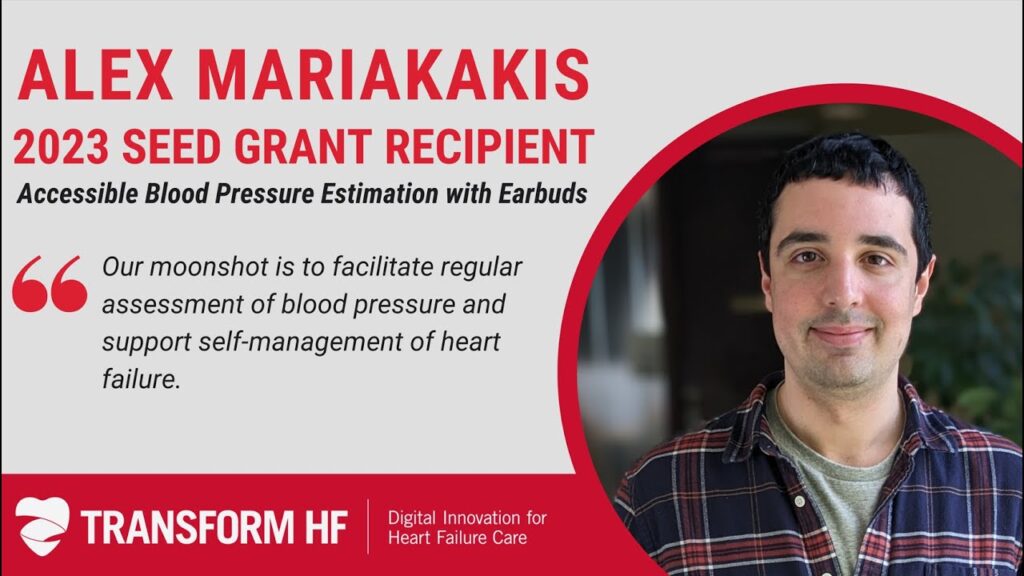Dr. Alex Mariakakis is the Assistant Professor at the University of Toronto in the Department of Computer Science. He has received a seed grant from TRANSFORM HF for his project, “Accessible Blood Pressure Estimation with Earbuds.” This young Canadian researcher listens to high blood pressure sound. Alex has kindly asked agreed to elaborate on this project:
Question 1: Earbuds to measure blood pressure, how does it work?
How would you explain to a patient about the use of earbuds for monitoring blood pressure? My understanding is that the earbuds will transmit heart sounds to a certain system. This system analyzes them to determine the patient’s blood pressure, am I right? How accurate is this technology?
Adaptive noise-cancelling earbuds have two microphones. One is pointed outside of the ear to listen to the sound around us. And one is pointed inside the ear. It is there to monitor what we are hearing to make sure the cancellation is working properly. It turns out that when a person is seated in a quiet room, the in-ear microphone can pick up all sorts of interesting sounds produced by the body. These sounds can range from snoring and teeth grinding to even subtle sounds like heartbeats. These audio signals contain a lot of interesting information about how the heart is functioning. Jumping from heart sounds to a blood pressure measurement is not straightforward. But we plan on using machine learning to help us learn the mapping between the two.
Question 2: High blood pressure sound research. Potential application.
I understand that you have just started your research. What potential do you see in earbuds being used for blood pressure monitoring? Do you think your technology can ensure continuous monitoring?
The sounds that we’re recording from within the ear are quite subtle. So we are anticipating this technology to become the most accurate eventually. This could be during a remote health consultation when a person is talking with a doctor over Zoom. Or we may use them as a daily monitoring tool that sits by someone’s bed. Of course, continuous monitoring would be the most exciting application. The earbuds are far more comfortable than a blood pressure cuff to wear throughout the day. However, we would need to use additional signal processing steps to account for noise due to motion and ambient background sounds. We feel that working on momentary assessment is a good first step.
Question 3: Clinical, ethical and technical challenges
What clinical, ethical and technical challenges are there to solve, those that you foresee now?
There are many challenges beyond the ones I have already mentioned. I list a couple of them below:
– The suitability of the sound recorded within the ear for estimating blood pressure depends on many person-specific factors. They are related to body shape – not just height and weight, but other factors like arterial stiffness and the length of vessels in the body. This is not only a technical challenge, but also a challenge about equitability since we want our technology to work on everyone regardless of their gender, age, or body shape.
– Giving patients access to convenient blood pressure assessment means that we can get a better understanding of how people’s blood pressure varies over time (i.e., over multiple hours, days, or weeks). This data has been quite difficult to gather in the past. On the one hand, there is much we can learn from this data. On the other hand, helping patients and clinicians alike sort through this data and make meaning from it is a challenge that we will need to address.

